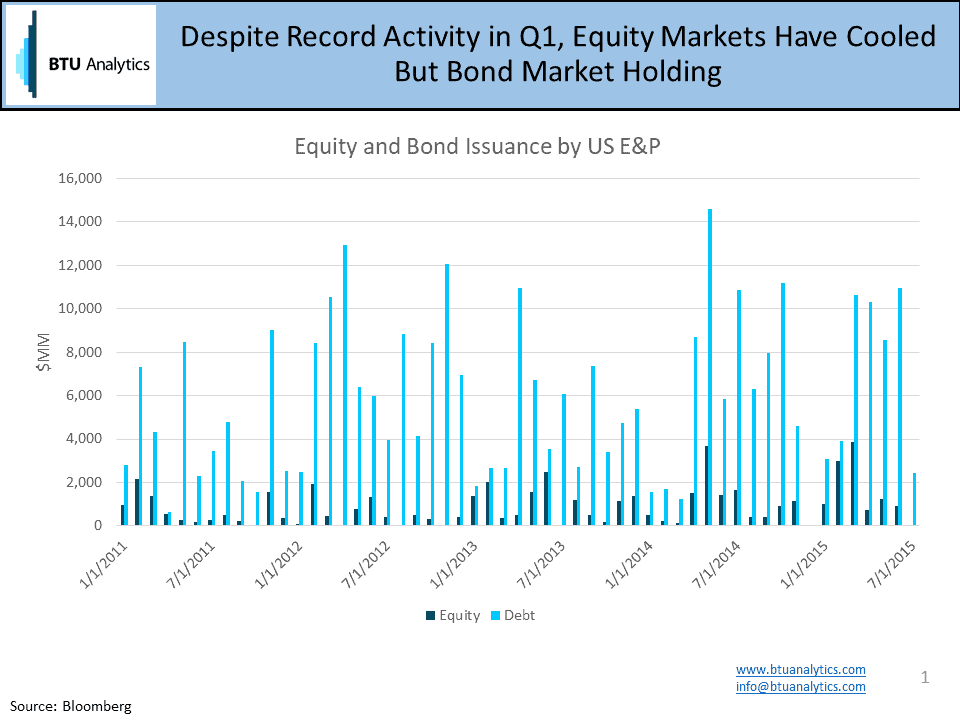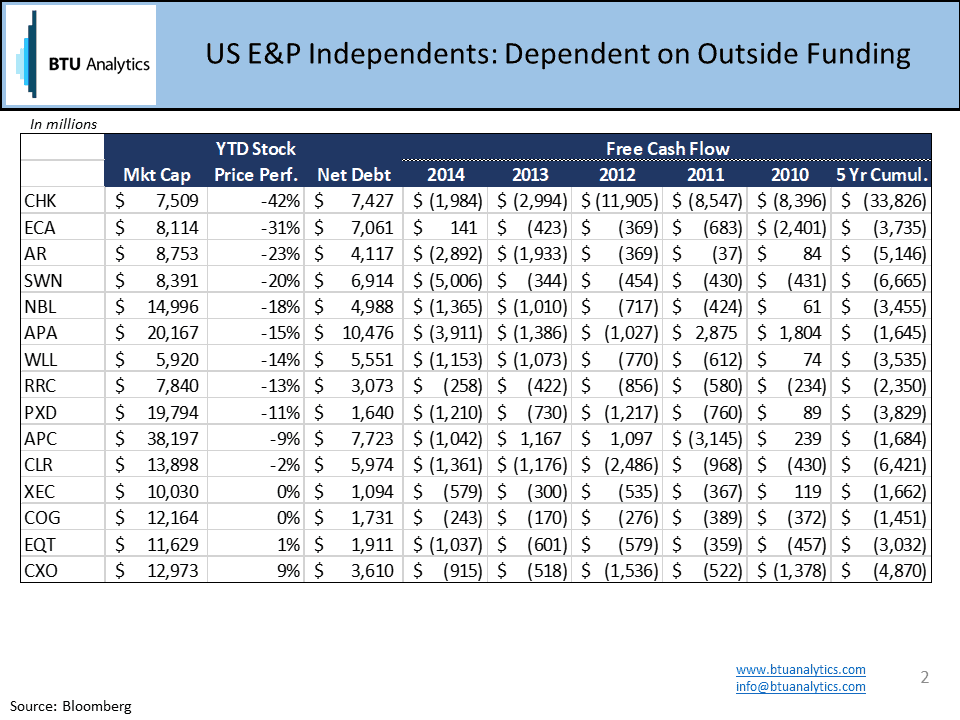Full-cycle economics aren’t often mentioned when trying to forecast E&P activity. In a world where all capital for resource development needs to be generated internally, full-cycle economics (which burden returns with additional costs such as leasing acreage, corporate overhead, geologic work, etc.) should dictate cash flow and the pace of asset development. But we haven’t been in that world for some time now. With the recent step down in crude oil prices, some voices in the industry have indicated that the faucet of outside capital, which has propped up oil and gas activity throughout the shale era, is about to be turned off. Will rationality return to the market, ending the period where investment decisions are based on half-cycle costs, production growth and hope?
Capital market activity for US E&P companies year-to-date shows a lot of cash entering the market early in the year as investors attempted to buy into an industry that appeared to be ‘on sale’. Crude oil prices fell by more than 50%, which should have caused production to decline and create a quick bounce, right?
But those investors failed to take into account the productivity gains made by the industry, which have made impressive headway in offsetting 50% declines in the rig count. Furthermore, they underestimated the will of the Saudis to maintain market share. As we’ve been reporting to our clients over the previous few months in our Upstream Outlook, despite dramatic drops in the rig count, the number of wells drilled per month has only fallen 38% while IP rates have been rising and breakeven costs in the most productive plays have dropped dramatically.
More recent activity in the capital markets seems to indicate that the flow of outside capital might be slowing. The chart below shows the flow of equity capital to US producers throughout the first half of the year. Second quarter equity raised by US E&P totaled $2.8 Bn in the second quarter, versus $7.8 Bn in the first quarter. Note, however, that we don’t necessarily see the same trend in the bond market, with new issues in June being even higher than levels witnessed earlier in the year.

Many producers have had some protection from hedges, but a significant amount of those hedges only extend through this year and into next. If producers truly must learn to live within cash flow, activity will need to shift much lower than it is even today. And there isn’t much precedence for long-term capital discipline within the ranks of US E&P independents. The table below shows historical free cash flow for some of the larger independents. Notice just how well year-to-date stock performance trends with five year cumulative cash flow. That has not been the case over much of the shale era.

It’s too early to call whether we are seeing the end of free-flowing capital into the E&P sector and the the return of full-cycle economics. But if the tide is indeed turning, the winners in the next phase of the industry will look and behave much differently than the companies that led us into the shale boom.









